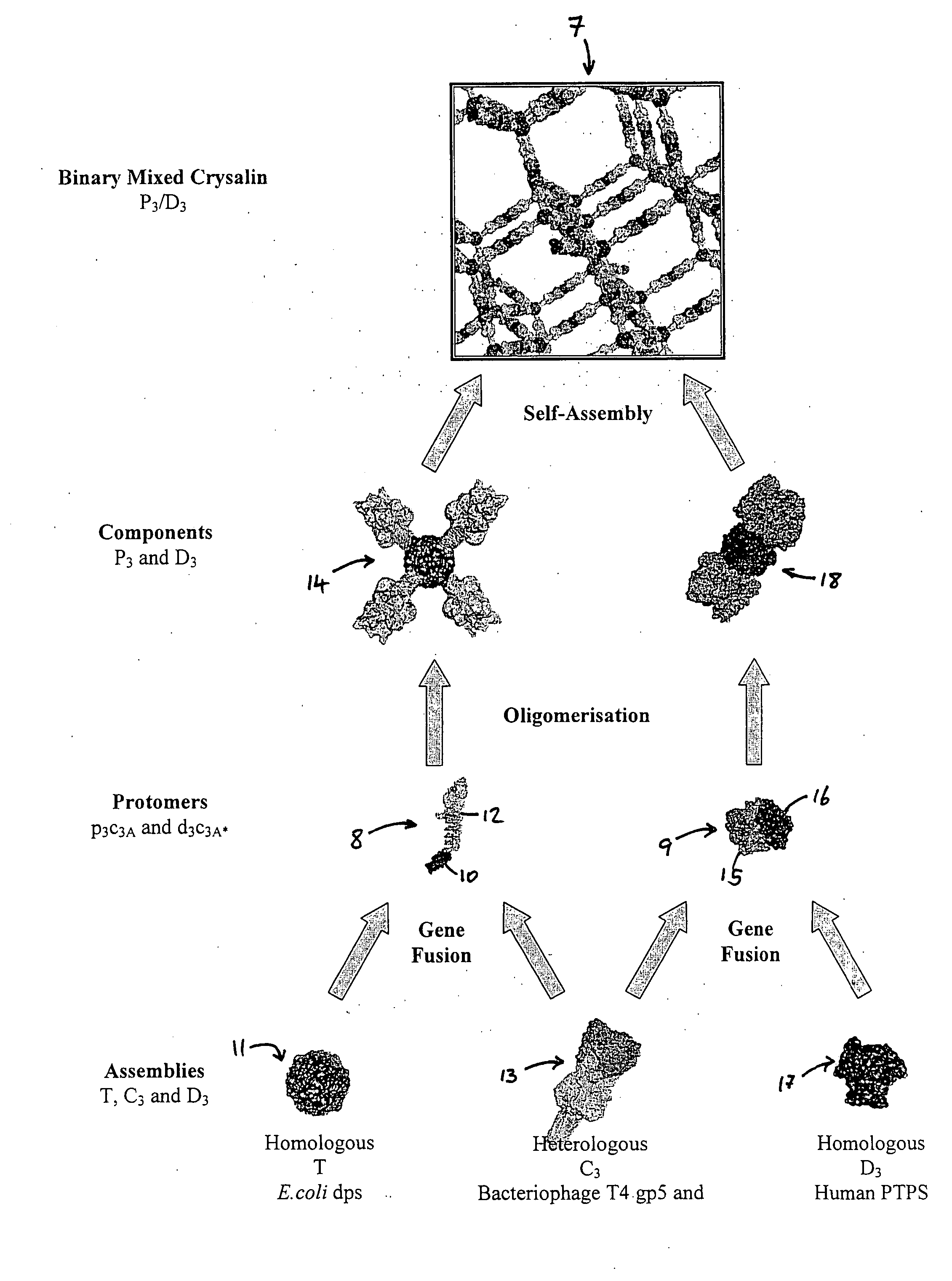Protein structure
a technology of protein structure and structure, applied in the field of protein structure, can solve the problems of reduced number of types, difficult identification of suitable proteins, and difficult design, and achieve the effect of reliable assembly
- Summary
- Abstract
- Description
- Claims
- Application Information
AI Technical Summary
Benefits of technology
Problems solved by technology
Method used
Image
Examples
Embodiment Construction
[0034] Protein structures in accordance with the present invention may be designed by selecting oligomer assemblies which, when fused together with rotational symmetry axes of the same order aligned with each other, produce a repeating unit which is capable of repeating in one, two or three dimensions. As the symmetry of the repeating unit, and hence the structure as a whole, depends on the symmetry of the oligomer assemblies, this involves a selection of oligomer assemblies having a quaternary structure which provides appropriate symmetries. This is a straightforward task, because the symmetries of oligomer assemblies are generally available in the scientific literature on proteins, for example from The Protein Data Bank; H. M. Berman, J. Westbrook, Z. Feng, G. Gilliland, T. N. Bhat, H. Weissig, I. N. Shindyalov & P. E. Bourne; Nucleic Acids Research, 28 pp. 235-242 (2000) which is the single worldwide archive of structure data of biological macromolecules, also available through w...
PUM
| Property | Measurement | Unit |
|---|---|---|
| Dynamic viscosity | aaaaa | aaaaa |
| Structure | aaaaa | aaaaa |
| Dimension | aaaaa | aaaaa |
Abstract
Description
Claims
Application Information
 Login to View More
Login to View More - R&D
- Intellectual Property
- Life Sciences
- Materials
- Tech Scout
- Unparalleled Data Quality
- Higher Quality Content
- 60% Fewer Hallucinations
Browse by: Latest US Patents, China's latest patents, Technical Efficacy Thesaurus, Application Domain, Technology Topic, Popular Technical Reports.
© 2025 PatSnap. All rights reserved.Legal|Privacy policy|Modern Slavery Act Transparency Statement|Sitemap|About US| Contact US: help@patsnap.com



